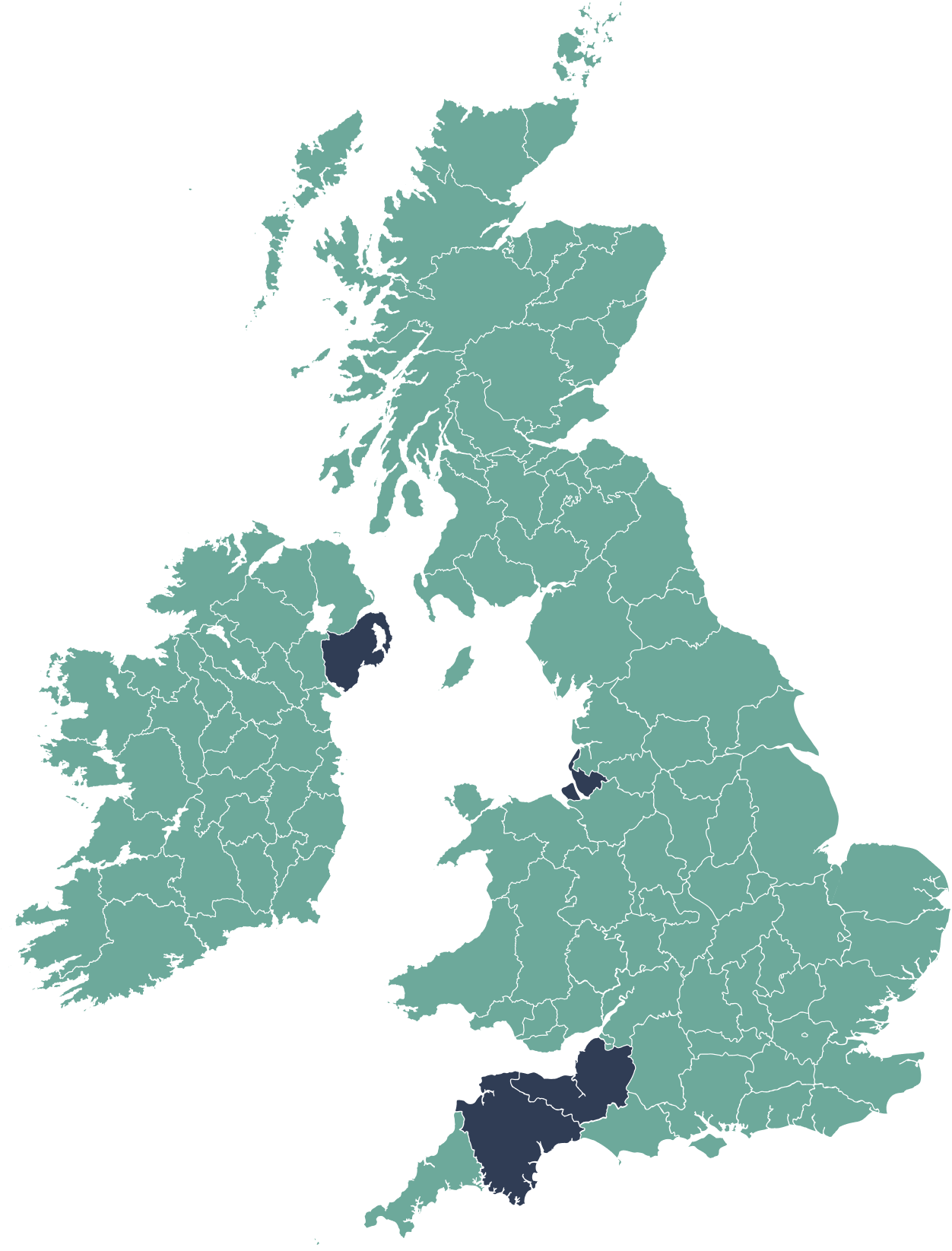Riello UPS supported the planting of 4,000 climate resilient trees across the UK in 2024-25
Riello UPS is proud to be working in partnership with GreenTheUK and the Royal Forestry Society (RFS) to plant climate-resilient trees across the UK’s woodlands. This collaborative initiative brings together the RFS’ 140+ years of forestry expertise and GreenTheUK’s community-driven approach to ensure every tree planted contributes to a wider, lasting environmental legacy.
The RFS is a leader in sustainable woodland management. With deep-rooted knowledge passed down through generations, they understand that healthy, thriving woodlands depend not only on the trees we plant, but how we care for them. Our woodlands are managed with both climate and biodiversity in mind.
This partnership is helping to strengthen the resilience of UK woodlands against pests, diseases, and the accelerating impacts of climate change. Increasingly frequent extreme weather events including floods, droughts and storms are placing additional stress on trees. Weaker trees are far more vulnerable to disease and pests. By planting a broader mix of tree species, including some non-native and naturalised varieties, we improve the overall health and adaptability of woodland ecosystems, giving them a better chance of survival in the face of climate change.

While native species are brilliant for biodiversity, we simply don’t have enough of them to ensure resilient sustainable woods and trees for the future. Many of our native tree species are under threat from new and existing pests and diseases. That’s why diversifying our woodlands is key. If we plant a wide variety of tree species (both native and non-native) we will help to ensure that at least some species will survive future threats. Tree cover habitats will be maintained and our native wildlife will have new and existing trees that they can depend on. Encouragingly, species like red squirrels have already adapted to living in some non-native conifer woodlands because of the ample food supply their cones provide. According to the Forestry Statistics 2024, woodland cover in the UK now stands at 13.5%, with 20,660 hectares of new woodland created in 2023/24, a positive step toward the government’s target of 30,000 hectares annually. With support from businesses like Riello UPS, we can help ensure that number continues to grow each year.
Expanding woodland cover plays a vital role in tackling climate change. Woodlands store an estimated 4,000 million tonnes of carbon in the UK alone, according to the Save Our Wild Isles campaign. Beyond carbon capture, trees help stabilise soils with their extensive root systems, reduce flood risk by intercepting rainfall with their canopies, and improve water retention in the ground. Some trees can even signal distress through chemical messaging when under attack, giving nearby trees a chance to defend themselves, a remarkable form of natural resilience.
Yet despite all this, the UK remains the second-largest importer of wood products in the world, much of it for use as biofuel. Relying on imports not only undermines our green credentials, but also increases the risk of introducing new pests and diseases to our woodlands.
That’s why responsible, UK-based tree planting guided by expert partners, like the Royal Forestry Society and GreenTheUK, is so important. It’s about planting the right trees, in the right places, and caring for them in the right way so our woodlands can thrive for generations to come.
Tree Species Planted:
1,000 trees planted in County Down
This woodland was previously a conifer plantation which has now been replanted with a broader mix of trees. The different tree types and sizes will provide lots of different habitats for local wildlife. Trees such as hazel, cherry and crab apple will provide vital nuts and fruit for birds and mammals. The scented flowers of fruit trees are also particularly beneficial for minibeasts, including bees.
160 trees planted in Devon
This small, ancient woodland suffered considerable damage from Storm Eunice in 2022. Around 100 mature trees were lost. Where trees have been lost, some birch, holly and oak trees are naturally regenerating. As part of this project, naturally regenerating trees have been supplemented with additional planted trees. This site has been used by the local school for Forest School visits since 2022 and is highly valued in the local community. The woodland is also home to a diverse range of local wildlife including rare moths, woodland birds, bats and specialist lichens.
2,000 trees planted in Somerset
This new native woodland will connect habitats with neighbouring woodlands and include open spaces to provide for an even more diverse range of wildlife. Once established, the newly planted native broadleaves will reflect and enhance the character of the local landscape. The ‘direct seeding’ technique being used in this woodland will mean better quality trees that are stronger and healthier. This means they will be more resilient to our changing climate, drought and to the threat of pests and disease.
840 trees planted in Merseyside
This project demonstrates multi-purpose forestry, managing it for both wildlife and timber production. A felled pine plantation covered with a dense layer of bracken, this project aims to restore the pine woodland and introduce a mix of broadleaf trees and shrub species to create graded edges and understory layer. Having a diverse structure within a woodland offers a wider range of habitats for wildlife and makes the woodland more resilient to pests and disease.

UN's Sustainable Development Goals
As a GreenTheUK partner, you support projects that are in line with the UN Sustainable Development Goals.

Take urgent action to combat climate change and its impacts.

Sustainably manage forests, combat desertification, halt and reverse land degradation, halt biodiversity loss.

































































.jpeg)
.jpg)
.jpeg)
.jpg)
.jpeg)
.jpg)
.jpeg)
.jpg)
.jpeg)
.jpeg)
.jpeg)
.jpeg)
.jpeg)
.jpeg)
.jpg)
.jpg)
.jpg)
.jpg)
.jpg)
.jpg)
.jpg)
.jpg)
.jpg)